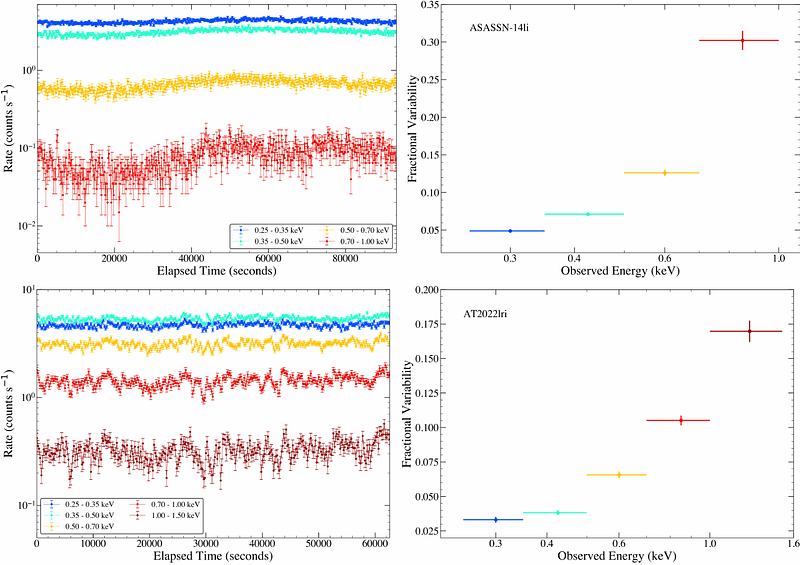The X-ray variability of tidal disruption events

The X-ray variability of tidal disruption events
Andrew Mummery
AbstractWhen a star is torn apart by the tidal forces of a supermassive black hole (a so-called TDE) a transient accretion episode is initiated and a hot, often X-ray bright, accretion disk is formed. Like any accretion flow this disk is turbulent, and therefore the emission from its surface will vary stochastically. As the disk has a finite mass supply (i.e., at most the initial mass of the disrupted star) the disk will also undergo long-timescale evolution, as this material is lost into the black hole. In this paper we combine theoretical models for this long time evolution of the disk with models for the stochastic variability of turbulent accretion flows which are correlated on short (orbital) timescales. This new framework allows us to demonstrate that (i) dimming events should be more prevalent than brightening events in long term TDE X-ray light curves (i.e., their log-luminosity distribution should be asymmetric), (ii) TDE X-ray light curves should follow a near- (but formally sub-)linear correlation between their root mean square variability and the mean flux, (iii) the fractional variability observed on short timescales across an X-ray observing band should increase with observing energy, and (iv) TDEs offer a unique probe of the physics of disk turbulence, owing to their clean spectra and natural evolutionary timescales. We confirm predictions (i) and (ii) with an analysis of the long timescale variability of two observed TDEs, and show strong support for prediction (iii) using the intra-observation variability of the same two sources.